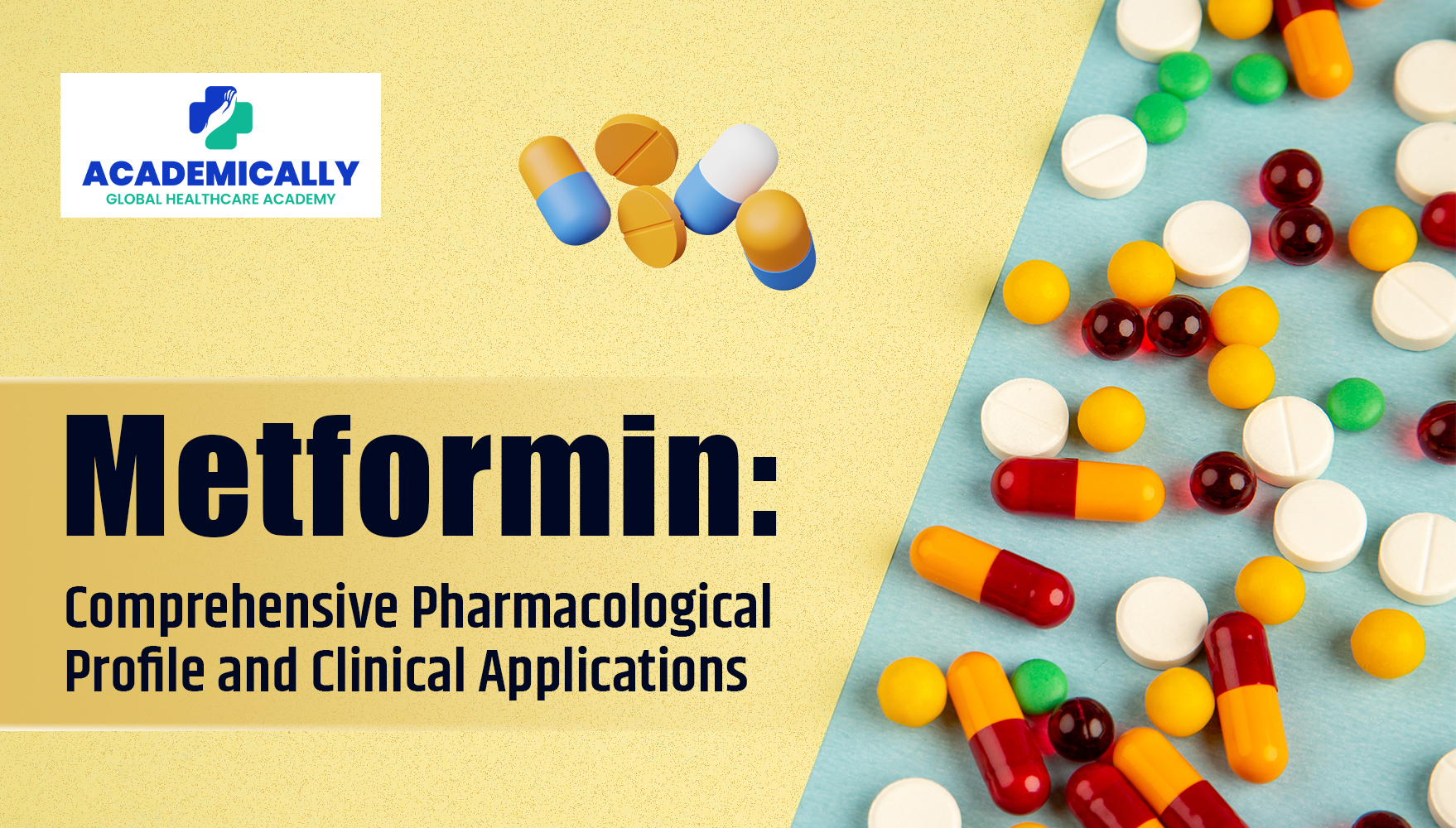1. Pharmacokinetics
Understanding metformin's journey through the body is crucial for grasping its efficacy and potential side effects. Let's explore its absorption, distribution, metabolism, and elimination:
- Absorption: Primarily occurs in the small intestine, with incomplete absorption
- Distribution: Doesn't bind to plasma proteins, allowing for wide distribution
- Metabolism: Unique in that it's not metabolised, preserving its molecular structure
- Elimination: Primarily through renal excretion via active tubular secretion
- Half-life: Approximately 6.2 hours, influencing dosing frequency
2. Mechanism of Action
Metformin's multifaceted approach to blood glucose control sets it apart from other antidiabetic medications. Its primary mechanisms include:
- Reduction of hepatic glucose production:
- Inhibits gluconeogenesis and glycogenolysis, curbing excess glucose release
- Activates AMP-activated protein kinase (AMPK), a key regulator of cellular energy
- Enhancement of peripheral glucose uptake:
- Boosts insulin sensitivity in muscle and adipose tissue
- Facilitates GLUT4 translocation to cell membranes, improving glucose uptake
- Decrease in intestinal glucose absorption, limiting postprandial glucose spikes
- Lowering of plasma free fatty acid concentrations:
- Reduces lipotoxicity, a contributor to insulin resistance
3. Clinical Indications
While primarily known for diabetes management, metformin's utility extends beyond this realm. Its approved and off-label uses include:
- Primary: Treatment of Type 2 Diabetes Mellitus
- Secondary:
- Polycystic Ovary Syndrome (PCOS), addressing associated metabolic disturbances
- Gestational diabetes, offering a safer alternative to insulin in some cases
- Prediabetes/Metabolic syndrome, potentially delaying or preventing T2DM onset
4. Dosage and Administration
Proper dosing and administration are key to maximising metformin's benefits while minimising side effects. Here's a general guide:
- Initial dose: 500 mg twice daily or 850 mg once daily, allowing for gradual titration
- Maximum dose: 2550 mg/day (in divided doses), balancing efficacy and tolerability
- Administration with meals reduces gastrointestinal side effects
- Extended-release formulations offer convenience and potentially improved tolerability
5. Contraindications
Recognising situations where metformin use is inadvisable is crucial for patient safety. Key contraindications include:
- Renal impairment, due to increased risk of lactic acidosis.
- Acute or chronic metabolic acidosis, which metformin could worsen.
- Hypersensitivity to metformin, preventing its use in allergic individuals.
- Severe hepatic dysfunction, as it may impair lactate metabolism.
6. Adverse Effects
While generally well-tolerated, metformin isn't without potential side effects. Awareness of these helps in patient counselling and monitoring:
- Common: Gastrointestinal disturbances (nausea, vomiting, diarrhoea), often temporary.
- Rare but serious: Lactic acidosis, particularly in those with renal impairment.
- Long-term use: Vitamin B12 deficiency, therefore requiring periodic monitoring.
7. Drug Interactions
Metformin's interactions with other medications and substances can impact its efficacy and safety. Key interactions include:
- Increased risk of lactic acidosis with:
- Iodinated contrast agents, necessitating temporary discontinuation
- Alcohol, which can affect lactate metabolism
- Other drugs causing renal impairment, such as NSAIDs in high doses
- Decreased efficacy of metformin with:
- Cationic drugs (e.g., cimetidine), which may compete for renal tubular transport
- Enhanced hypoglycemic effect when combined with:
- Sulfonylureas or insulin, requiring careful blood glucose monitoring
8. Special Considerations
Certain patient populations require extra attention when prescribing metformin:
- Elderly patients: Start at lower doses and increase slowly to prevent potential renal impairment.
- Surgical procedures: Discontinue 48 hours before surgery to reduce lactic acidosis risk.
- Pregnancy: Category B; generally considered safe but requires individual risk-benefit assessment.
- Lactation: Excreted in breast milk; use with caution and monitor the infant for adverse effects.
9. Monitoring Parameters
Regular monitoring ensures metformin remains safe and effective. Key points include:
- Renal function, crucial for dose adjustments and lactic acidosis prevention.
- Glycated haemoglobin (HbA1c), assessing long-term glycemic control.
- Fasting plasma glucose, for more immediate glycemic status.
- Vitamin B12 levels in long-term use, addressing potential deficiency.
10. Patient Counseling Points
Effective patient education improves treatment following and outcomes. Key points to cover include:
- Taking metformin with meals to minimise gastrointestinal side effects.
- Avoiding excessive alcohol intake to reduce lactic acidosis risk.
- Reporting signs of lactic acidosis (e.g., muscle pain, difficulty breathing) as soon as possible.
- Emphasising the importance of regular blood glucose monitoring
11. Emerging Research
Metformin's potential extends beyond diabetes, sparking interest in various fields:
- Ongoing studies in cancer prevention and treatment, exploring its anti-proliferative effects.
- Investigations into cardiovascular disease prevention, utilising its metabolic benefits.
- Research on potential anti-aging effects, based on observations of longevity in diabetic patients.
12. Pharmacoeconomics
The economic aspects of metformin use are favourable, contributing to its widespread use:
- Cost-effective first-line treatment for Type 2 Diabetes Mellitus, offering significant clinical benefit at low cost.
- Available as a generic formulation, making it more accessible.
- Potential for substantial cost savings in preventing diabetes complications.
Conclusion
Metformin's multifaceted action, favourable safety profile, and cost-effectiveness cement its place in modern medicine. As research reveals new potential applications, its importance in healthcare continues to grow. For pharmacy professionals, a thorough understanding of metformin's pharmacology, clinical use, and patient management is extremely important.
Schedule a FREE one-on-one consultation online here and get expert advice for your career advancement as a pharmacist wishing to settle abroad.


